Sony VAIO VGN-S170P

Introduction and History
This is a very belated review of my Sony VAIO VGN-S170P notebook. I originally intended to review this notebook a year ago but during my testing period the hard disk crashed. Once I received the notebook back from service I proceeded to gather more testing data only to have the hard disk crash once again. Because of this, months had passed and I needed to get work done so the review was delayed indefinitely.

Since that time, there have been several generations of VAIO S-Series notebooks released with changing variations and new specifications. Physically, the notebook has not changed except for some minor cosmetic changes but there are internal changes so this review may not fully reflect those changes. I will try to point out what’s new where possible.
So why the VAIO S Series?
If you read my VAIO TR review, you’ll notice there were a few things that I found lacking in the system which weren’t that major but were items I was hoping for in a notebook. Most notably, I was looking for a more solid notebook, an updated wireless chipset plus integrated Bluetooth, decent built-in discrete graphics, and larger hard disk capacities.
While the TR models advanced and the newer T models were introduced, none of them really exceeded what I had with the TR or addressed items on my wishlist. Sure processing speeds increased marginally, wireless and Bluetooth capabilities added, and slightly larger hard disks emerged but it just didn’t seem like enough.
That all changed when Sony announced the release of the new VAIO S series notebook. A completely brand new model, the S series replaced the venerable Z1 series as Sony’s flagship mobile performance model. Shockingly, Sony managed to cram near desktop replacement performance in a near ultraportable weight and form factor. Even more impressive was that the VAIO S series was offered in a CTO (Customized To Order) option allowing the customer to customize their notebook with an array of graphics, wireless, memory, screen, and hard disk options.
VAIO VGN S Series
There are a variety of factors that made the S series stand out. Probably the most notable was the inclusion of up-to-date discrete graphics chipsets from ATI. Originally, there were two basic models, the S150 and the S170 models. The main difference between the two was the type of graphics chipset used in the notebook. The S150 used the ATI Radeon Mobility 9200 with 32MB of memory while the S170 used the ATI Radeon Mobility 9700 with 64MB of memory. At the time, this was considered high end (especially in the case of the 9700) and almost the best that one could get in any notebook.
The next feature was the new 13.3†LCD XBrite screen. While 13.3†LCD screens were nothing new, no previous design had sported a widescreen shape with a resolution of 1280x800 (16:10 aspect ratio). The reason why this is a big deal is that Sony managed to fit a 13.3†screen in the size of most 12†notebooks. Also, while many notebook manufacturers were still putting out 4:3 designs, Sony was leading the way with the most widescreen designs.
The new design was also outstanding because of the weight. At 4.2 lbs. with the standard battery, there was no other notebook in the same class that could match its specifications. With battery specifications of 1.5-5.5 hours with averages of 3-3.5 hours, this was exceptional for such a powerful system. With the extended large capacity battery, battery life extended to over 7.5 hours with averages of 4.5-5.5 hours. Also, even with the large capacity battery installed, the weight was only 4.56 lbs.
The S also have feature Intel’s latest wireless solution featuring 802.11b/g and an integrated Bluetooth solution as an option giving a person all of the connectivity options they would need.
Finally, the S series utilized 2.5†HDDs (hard disk drives) allowing for a variety of capacity and speed options.
Because I had started working on my notebook almost exclusively, I was feeling the need for a more powerful notebook that would give me the performance of my desktop system (a Pentium 4 2.4GHz based system with ATI Radeon 9700 graphics) when I was working on the move. With that in mind, I decided to customize and order a S170P system.
Specifications
Here’s what I ended up ordering directly from Sony. My model was the CTO VGN-S170P with the following components.
- Intel Pentium M 735 1.7GHz (2MB L2 cache) with SpeedStep
- 400Mhz Bus Speed
- 13.3†Wide (1280x800) WXGA TFT with XBRITE
- 512MB DDR SDRAM (DDR2700 533MHz) System Memory
- 80GB Hard Disk (Hitachi Travelstar 5400RPM model)
- ATI Mobility Radeon 9700 64MB (discrete)
- Internal DVD-RW
- Integrated Wireless Intel PRO/Wireless 2200 802.11b/g
- Integrated Bluetooth
- Integrated 56K v.90 modem
- Integrated Intel 10/100 Ethernet RJ45
- 1 x Type II Cardbus slot (PC Card)
- 1 x iLink (Firewire 4-pin)
- 2 x USB 2.0
- 1 x Memory Stick Pro Slot
- 1 x VGA out
- VGP-BPL2 Large Capacity battery (2.5-7.5 hours)
- 4.56 lbs. weight with large capacity battery
- 12.3†x 1.16-1.39†x 8.85†(W x D x D)
Since that time, I have upgraded a few items on the notebook itself including the following items:
- 2GB DDR installed
- Intel PRO/Wireless 2915ABG installed to add 802.11a/b/g support
- Seagate Momentus 100GB 5400RPM hard disk installed
- VGP-BPS2 Standard Capacity battery
Even though the Sony says 1GB is the maximum memory, it is a well known fact that the Intel 855GME chipset is capable of accepting up to 2GB of memory and I decided to see if Sony was somehow artificially limiting the system. They weren’t and I needed more memory for Photoshop and Premiere and so I happily upgraded.
The Intel PRO/Wireless 2915ABG was added since I run a 802.11a network and wanted to utilize it. I have a lot of 2.4GHz traffic in my area so being able to run on a different band is nice.
The hard disk was upgraded out of desperation. After two failures within a short amount of time, I didn’t trust the Hitachi Travelstar 80GB 5400RPM drives. While Sony Service was able to replace the drives, I didn’t like the fact that I was without my system for weeks at a time and so I replaced it. To my surprise, the Seagate Momentus, is equally snappy, quieter, and gives me better battery life than the Hitachi.
I also decided that I wanted a spare battery just in case and ordered a standard capacity battery since I also wanted a slightly lighter traveling option for shorter trips not requiring the bigger battery.
So please note that this review reflects the updated system and any performance benchmarks will reflect this as well.
First Impressions
When I first received my S170P, I was quickly impressed by it. The most alarming thing for me was the weight. I was used to 2.98-3.5 lb notebooks for the last four years so lifting 4.56 lb S170P was something new to me. I elected to start with the large capacity battery although later I added a standard battery. Oddly enough, the 0.36 lb weight difference is very noticeable. At 4.2 lbs, the notebook is very light weight and easy to carry around. Also, it felt extremely solid so that when the notebook was closed it had very little flex.
As always, the XBRITE screen was immediately impressive. In fact, this newer version was noticeably brighter than my VAIO TR’s first generation XBRITE screen.
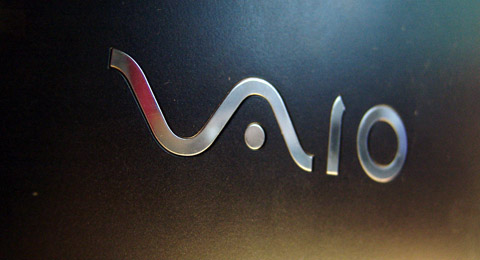
The design itself is very no-nonsense with very clean lines and a professional finish. In order to keep the design clean, some of the ports are completely covered. Personally, I really like this decision since most of the time you aren’t using the ports so it makes sense to have them covered to keep dust out and to keep connectors from being damaged.
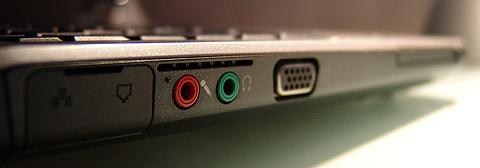
The only exposed connectors are the “smart sensing†VGA port, the headphone and microphone jacks, and the Memory stick slot. I wish the headphone and microphone jacks were a matching color instead of the very standard red and green. There is a silkscreened glyph next to the jacks so it’s really not necessary to continue using the colored ports. As always, Sony’s PCMCIA slot features a built-in cover to protect the slot. I still can’t believe that many companies are still using slot fillers instead of built-in covers. Sheesh.

Lastly, the keyboard was a joy to type on. There were many complaints that the VAIO TR’s keyboard was a little bendy (which was true). The VAIO S’s keyboard is very stable with great key pitch and a very good layout. My only complaint was the removal of the right side Fn key. I became quite used to using it with the VAIO TR and had to train myself to rely on the left side Fn key.
Build Quality
The VAIO S definitely demonstrates Sony’s attention to detail and quality design. The system is definitely not flashy but it’s built solidly.
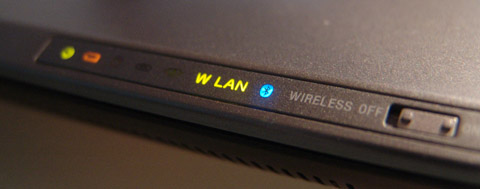
The status light indicators are all conveniently located on front right side of the notebook displaying power, battery, hard disk, optical disk, memory stick slot, wireless LAN and Bluetooth status with green, red, orange, and blue lights.
On the top part above the keyboard, you will find the num, caps, and scroll lock indicator lights. Next to them are the power button and two special application buttons which can be programmed for a variety of uses. For instance, you could program the buttons to open your e-mail program, blank the screen, etc.

The speakers are actually pretty decent. They’re a vast improvement on what’s available on my VAIO TR and serviceable if you don’t have a decent set of headphones lying around.
The touchpad cleverly matches the palm rest area and supports the typical hot areas and vertical and horizontal scrolling. The mouse buttons are a little slim and clicky and are an odd silver color which doesn’t seem to match up with the rest of the color scheme…well, unless you count the silver on the VAIO logo on the lid. I think they could have been a little bit bigger but they work.
The screen is a latch-less design first introduced in the venerable Z1 series and found in nearly all of Sony’s notebooks. It’s definitely a trademark Sony feature that works very well in practice. It’s very stiff before opening to ensure it stays closed when it needs to and gradually loosens as you open it up. Brilliant. The back of the screen itself is magnesium based and very scratch resistant.
Now, let’s delve into what is probably the most talked about build quality issue of the VAIO S series. This issue would be the system fan that cools the GPU and CPU. To be frank, the fan is surprisingly loud especially to those who are coming from ultraportables that are silent or near silent. It is somewhat understandable since this notebook is using a much more powerful GPU than I’m used to but I was surprised that the system could make that much noise especially on a full load. I think Sony could have chosen a better cooling design or at least a quieter fan solution. Most of problem seems to be with the aggressive settings of the fan controller. At CPU temperatures above 40 C, the medium speed of the fan kicks in immediately. Most of the time, the system is idle around 39-42 C. Simply raising the threshold to 44 or 45 C would help likely keep the fan from spinning up so often.
The system gets a little warm on the right side under the palm rest due to the placement of the HDD. Also, the right side below the fan exhaust tends to get warm since the CPU is located there. As expected, when on battery power both sides tend to be a bit cooler.

One really neat thing about the system is the expansion panel on the bottom. This is where you can upgrade the memory assuming you haven’t already maxed out the memory. Simply removing the panel allows access to both memory slots (MicroDIMM) and the miniPCI wireless card. Therefore, you could upgrade the 802.11b/g to an 802.11a/b/g card by Intel or Atheros. It’s nice that they make it so convenient so you don’t have to tear apart the system to do simple upgrades.
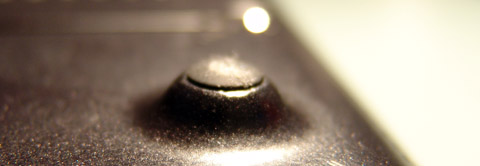
Finally, the system has some nice rubber nubs on the bottom of the system to keep the system off the table. They’re rubberized for better stability and raise the system enough for adequate air flow.
Connectivity and Ports
The S Series notebook has a very standard configuration. You get two USB 2.0 ports which is the bare minimum for notebooks nowadays. I could use a third but generally rare for me to have more than two. Alongside the USB ports is a single S400 i.Link Firewire port and all three are covered when not in use.
The VGA DB15 connector allows you to connect to a LCD/CRT monitor. It has a nice black color to match the rest of the notebook. It’s supposedly auto-sensing (with the video driver software) so you can just plug it in and control it with the Sony hotkey functions. It actually does work and makes for quick connections.
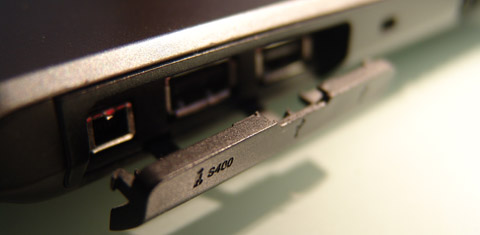
You also have the headphone out and microphone in jacks next to the VGA connector. As I mentioned earlier, these really should be a more neutral color like black or grey to match the rest of the notebook. They are a darker hue so they don’t stand out too much.
On the same side, the RJ45 10/100 Ethernet and RJ11 modem jacks bundled together and covered for the times when they’re not in use. Because of the wireless capabilities of notebook, most people won’t be using them but it’s nice to have them.
The final connector on this side of the notebook is the PCMCIA port that I’ve also mentioned before. It’s standard and remains covered when not in use.

The requisite Memory Stick slot is in the front of the system tucked next to the optical drive and supports all the latest versions of the Memory Sticks.
Lastly, you have an expansion port on the bottom that attaches to the port replicator that gives you three more USB 2.0 ports, a parallel port, an Ethernet port, and a DVI port. I’ve reviewed that separately here.
Performance
With a Pentium M 1.7GHz (Dothan based) with 2MB of Level 2 cache, the system performs on par with Pentium 4s running at 2.5-2.6GHz for most applications. Given that I’ve loaded up the system with 2GB of DDR helps things a bit. And for what it’s worth, you can install 2GB in the system despite Sony’s specifications of 1GB max. The reason for this is that when the system was released, 1GB memory modules weren’t readily available.
With this kind of processing power, this system can easily be used as a desktop replacement. The ATI Mobility Radeon 9700 with 64MB of discrete memory makes the system a very portable workhorse and you shouldn’t be left wanting for much more.
The use of 2.5†sized hard disks also means you can have top notch hard disk performance as well. By default, you can get 4200 and 5400 RPM hard disks directly from Sony. However, you “could†upgrade the hard disk to larger capacity 7200 RPM type models for higher end performance.
Battery Life
For a notebook of this weight and screen size, the battery life is pretty good. I will actually be doing a separate review of the standard and large capacity batteries shortly but with the standard battery, I have measured a minimum of 2 hours 18 minutes (full brightness DVD playback) and a maximum of 5 hours and 30 minutes (mp3 playback with screen off).
On average, I get around 3 to 3.5 hours with normal usage. Normal usage typically consists of e-mail, web browsing, word processing, streaming audio, instant messaging, image editing and programming with the brightness at 7/8. That’s pretty good. With the large capacity battery it’s 4-6 hours on average.
Obviously, the battery life is very dependent on the brightness of the screen. You can get better battery life by keeping the brightness down and using Sony’s control panel to keep the battery optimizing features on.
Portability
At 4.2 lbs, the VAIO S is easy to carry around especially considering what it’s loaded up with. The large capacity battery will push the weight to around 4.56 lbs which is still remarkable.

It should be pretty easy to find a case for the S series notebook since it’s been out for a while.
When closed, the system feels pretty solid. The port covers give the system a refined look and sleek finish.
The AC adapter is the typical slim type that Sony has been using since the TR series. In fact, it’s compatible with the TR and T series notebooks. Newer versions of the S Series use a different larger AC adapter due to higher power requirements.
Final Thoughts
Overall, I’m a big fan of my notebook as you can tell. It’s light, powerful, and full of features. It’s one of the nicer designs that Sony has had made in a while. It’s stylish but not flashy and should appeal to professional types due to its no-nonsense design. I do miss having a built-in microphone but that could be solved with a Bluetooth based version thanks to the built-in Bluetooth wireless.

I like that I have a good amount of portability without having to sacrifice any of the programs that I like to run. The fact that I can even install games on the system for some after hours fun is nice too.
The only thing I would change is Sony’s CPU/system fan system. It’s unusually loud and Sony could have done a better job with it. They could probably use a better quality fan or even go with a slightly larger heatpipe solution to lower the noise. When using the notebook in a quiet environment like office or a classroom, the noise of the fan can be extremely annoying and noticeable.
Since the time I purchased this notebook, Sony has made incremental upgrades to the system. The S series is more powerful than ever; however, the battery life is no longer as good which is sort of sad. I’m pretty happy that I got one of the earlier models and it should last me until at least next year when next-generation notebooks come out that are Windows Vista ready.
For more information about the S Series notebook, visit Sonystyle.com.


